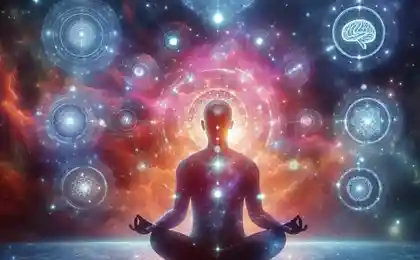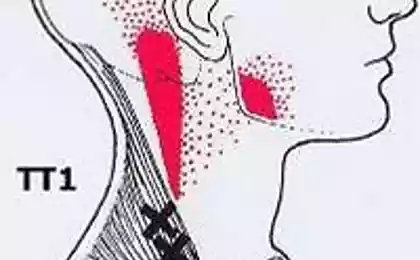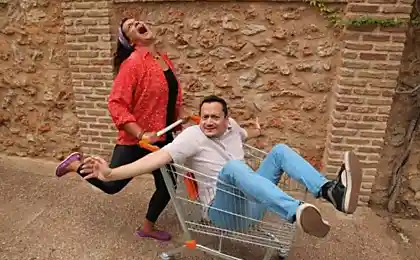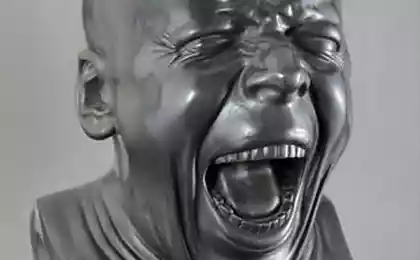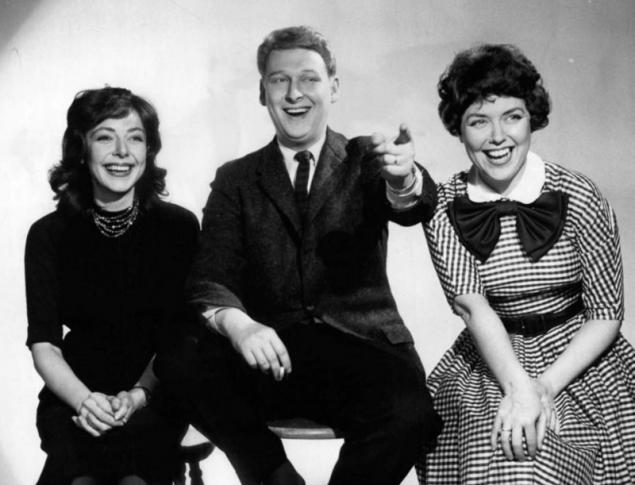
The phenomenon of laughter is known to everyone. This is a kind of emotional-physiological reaction, which is expressed through motor involuntary, oscillating movements of the body, popping sounds and a deep rhythmic breathing. It is an innate mental mechanism, experienced and used in almost every person. The phenomenon of laughter was discussed by philosophers and other sages many thousands of years: already Aristotle pointed out that laughter is what distinguishes man from animal. Scholasticism, for example, Thomas Aquinas, distinguished the good laugh from wrong. Kant wrote about the cathartic role of laughter: "Laughter is an affect from the sudden transformation of a tense expectation into nothing." Nietzsche maximize the impact of laughter, putting that it is not through anger to kill, but through laughter. Sigmund Freud regarded laughter as "diarrhea, mental excitement". One of the teachers in my German Professor, social philosopher and sociologist Helmuth Plessner has explored the boundaries of human behavior through laughter and crying. For Henri Bergson laughter "don't understand" in all senses.
The science of laughter — gelotology Laughter used in the life of every human being, consciously or unconsciously, it is a well known practical experience. But the scientific and theoretical basis for laughter failed recently. The science of laughter, the impact of laughter on people, its healing properties –gelotology (from the Greek γέλως gélōs — laughter), - originates in the 60-70-ies of the last century. Laughter as a tool of healing from psychological, physiological, etc. of injuries and diseases become in recent years more and more popular in the world. The founder of gelotology psychiatrist William fry (William F. Fry) conducted research on the effects of laughter at Stanford University from 1964 Alongside such well-known researchers gelotology as Lee Berk, Paul Ekman, Ilona Papousek, Robert Provine, Frank Rodden, Willibald Ruch und Barbara Wild. They developed the Foundation of modern humoro and studying. In the United States Association for Applied and Therapeutic Humor (Association for Applied and Therapeutic Humor ). In Russian literature is often wrongly called the founder of studying of Norman Cousins. He was behind, but came to moratoria a little later (not through science, but through his illness) than W. fry. Fry worked closely with the German therapist-gelotology Michael Tietze, with which it was introduced to Viktor Frankl, a famous psychotherapist with practical experience of spiritual awakening. Frankl was one of the first drew attention to so-called paradoxical effect of humor in the therapeutic process. Tietze developed a so-called morokuma. He is gelotophobia and actively collaborates with hospital clowns. Studies show that when you laugh at humans stand neurotransmitters and hormones, catecholamines like epinephrine and norepinephrine, which helps to neutralize the feeling of physical pain in the body. Laughter in the process allocated and other neurotransmitters and hormones along with catecholamines such as dopamine, the pleasure hormone, the release of endorphins, the pleasure hormone, and serotonin, the happiness hormone.
How laughter affects a person? The effect of laughter on mental and physical health diverse. In the literature usually distinguish the following areas:
- Positive thinking and mood due to the ability to laugh at yourself or the situation strengthens psychological stability, the ability to hold on to the negative side effects and enjoy life, the world.
- Relaxation, both physical and psychological: laughter in the process removed the emotional and body stiffness, which leads to relaxation, which helps a person to live more openly and successfully.
- Strengthening health and immunity: in the process of production of neurotransmitters and hormones, which possess an immunomodulating action, activates T-limfotsity and gamma-interferon, which protect the organism from neoplastic diseases, and are a natural pain reliever. There is an active stimulation of the muscular system: when the laughter involved more than 100 muscles in the body from head to toe. Improved circulation due to laughter leads to the strengthening of the cardiovascular system.
- Increasing stress: stress hormones no longer affect the body and mind, because the hormones of joy and happiness overlap their effects.
- Stimulation of the metabolism and cleansing of the body: by changing the type of breathing works the deep abdominal muscles increases the work of lungs, smooth muscles of the intestine, which leads to getting rid of toxins and other harmful substances accumulated in the human body.
- General psychotherapeutic effects: by releasing suppressed emotions and complexes are removed by physical, psychological fatigue and tension; resolve psychological problems.
Where the use of laughter? In the modern world there are various areas where the laughter is purposefully used in healing-therapeutic: Laughter therapy (and moratoria). Laughter yoga (Harsha yoga). Laughter in the spiritual practices. Hospital clowning (as part of kolonoterapii, Clown Care). Reveal meaningful each direction. Laughter therapy Laughter therapy and moratoria based on the treatment of psychological and physiological problems of the human methods that help to relax the person through a constructive or destructive humor, the use of theatrical forms, reading funny books and watching Comedy, and other means, causing laughter in humans. One of the classic examples of gelotology is the story of Norman Cousins (Norman Cousins), "human rassmeshili death." N. Cousins, a famous American journalist, was able in spite of the sad fatal diagnosis to overcome extreme physical pain and to heal through humor and laughter. Its history is described in many sources, and it caused a big wave of research in psychotherapy and psychology. Cousins founded the UCLA office for the study of humor. Laughter therapy is quite actively used in the Western European and American psychotherapy. About it we already wrote above, when analyzed gelotology. In Russia, this direction is not that popular. In psychological practice and literature are the work of Rimma Omarovoj that works at the intersection of art therapy, laughter therapy and laughter yoga through established smethodname. Laughter yoga laughter Yoga (Harsha yoga) is popular in many countries of the world movement, which was founded in 1995 by Indian physician, Madan Kataria (Madan Kataria). M. Kataria combined the basics of studying with exercises from yoga (pranayama) and established a system of clubs of laughter, quickly spread first in the USA and Germany, and then in other countries. Now around the world working on different data from 6,000 to 10,000 laughter clubs. In Russia laughter clubs operate quite separately, because of the instructors learned from the American laughter yoga specialists, and others engaged directly in the Indian school, Madan Kataria. Madan Kataria, came to interesting conclusions: laughter does not have to have a reason; it affects the person even if it is artificially induced. The body whether a particular cause of joy. When a person imitates the laughter, in the body flow the same physiological responses, and natural laughter. In any case it causes the production of hormones and neurotransmitters and positive emotional responses. Artificially induced laughter grows in the natural, if you do it regularly. System laughter yoga is based on a special technique: trained professionals conduct classes in the clubs in a specific pattern. Classes begin with a welcome with a laugh. Then given a light exercise for relaxation of body and breathing exercise for mood for laughter (drumming fingers on the chest and thymus, in-depth breathing, learning rhythm through clapping hands and the sounds of "Ho-Ho – ha-ha"). After that, the group suggests methods of body-oriented therapy and play therapy with laughter along with breathing exercises (imagine yourself a lion and laughing with his tongue hanging out, etc.). Thus members of the group prepare yourself for the main part of the work – many non-stop laughter, which often becomes artificial in the natural. Then given other exercises of laughter yoga (which can be applied individually in everyday practice). It's a smile in front of the mirror, or the insertion of a finger between the teeth to cause a reflex smile. Classes at the club usually ends with a short meditation, where the participants share of the accumulated positive energy with the world and with those who need this energy. In the process of the session, participants maintain a positive motto. An important role in laughter yoga is played by the following factors:
- laughter without reason;
- group dynamics, because laughter is contagious and the group laugh easier;
- eye contact in the eyes of the members of the group (strengthening of trust and openness);
- breathing exercises, partially adopted from yoga;
- application of basic principles — peace, freedom and joy.
Laughter in the spiritual practices of Meditation of laughter can be found in many ancient traditions – Buddhism, Sufism, Taoism. Laughter helps to turn off your mind, remove the clips and release the subconscious from interfering blocks, which is one of the important components of purification of the soul. It leads to one of the most important spiritual States — relaxation, which is achieved often by using laughter easier than using complicated postures or long hours of meditation. Laughter frees from sadness, discouragement, and suffering, on its basis it is possible to develop a radically new perspective on the problems and accept them. The laughing Buddha or the cheerful monks show that laughter is the same Way. In Japan, popular so-called laughing Hotei (Budai), which is also as a deity of happiness, joy and abundance, and the incarnation of the Buddha Maitreya. Its prototype is taken from legends about the Chinese monk Zizi. It is firmly strengthened in the spiritual traditions of China, and using Feng Shui has spread around the world in the form of laughing figurines-talismans of happiness and wealth. Laughter meditation for purification is used in many Sufi schools. Methods of moratoria and meditation of laughter used in their work with students and Osho Rajneesh. His meditation leads to a cathartic laughter, which is also no cause, and which frees the mind from the clamps and blocks. In the framework of positive thinking, through which go many of the traditions, it is possible to develop the astral body of man and to work through some mental blocks level. For the effective study of pride, one of the hardest qualities that prevent to develop spiritually, offer to laugh at yourself in front of the mirror two or three times a day. Often the state of spiritual awakening is accompanied by a long laugh. Some modern schools and groups for self-development apply methods of studying in their practice. Links to them can be found on the Internet.
Hospital clowning, hospital clowning is an international movement of clowns-volunteers and professionals on socio-cultural and psychological rehabilitation of children in hospitals hospitals methods of art therapy, kolonoterapii and play therapy. The movement of hospital clowns began with the clown of the new York city circus, Big Apple Circus, Michael Christensen (Michael Christensen). He founded in 1986 the organization of "Big Apple Circus Clown Care" and developed the direction of "Clown doctoring". His movement is pretty quickly picked up in Europe, first in Austria, Germany and later other countries. In Russia, hospital clowning also gaining strength. The founder of it in Russia is Konstantin Sedov. Hospital clowning works in the Western tradition, together with research centres, smeha and moratoria.
Summary and conclusions All major famous destinations active in the field of gelotology, universal in application to different types of people. Laughter is known to almost everyone and can effectively influence the subconscious of people and to heal them, in contrast to many types of psychotherapy, or spiritual practices. Only when working with large groups (rooms) it is necessary to consider that people with poor physical health might not withstand a long load on muscles and the respiratory system. So professionals working with such groups should be true professionals and be able to feel good audience. In groups with a very stiff both psychologically and physiologically people the quality of work is enhanced by mixed groups, where participants have experienced people who are not afraid to laugh. With all the versatility of gelotology be aware that, as shown by personal practice and observations of the author in various schools and groups laughter is not a panacea. Gematologichesky techniques effective in solving certain psychological problems of the person, or to treat certain diseases, because they release life energy, before departing for suppressed emotions, negative reactions, psychological and physiological complexes clamps. The level of development of spiritual practitioners that use laughter, shows that in gematologichesky techniques you can reach the initial degree of enlightenment. But if this is the only tool, it may not be enough for further development, if only the teacher assumes certain high vibration. It happens that the man himself bears a certain spiritual potential. Then he can open up and with the help of laughter therapy or laughter yoga. Gelotology is one of quality tools for self-development and working with lyudmi. But requires an individual approach to each person. In General, laugh for health! Rejoice! Life is beautiful!
Source: vseedino.ru/iscelenie-smekhom-chto-govorit-nauka
















